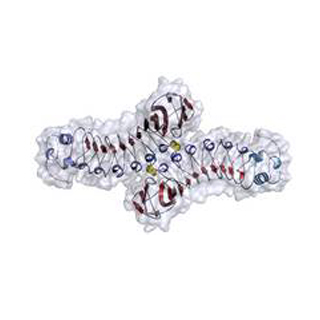
A research, in partnership with a British research group, structural biologists from the Helmholtz Centre for Infection Research (HZI) in Braunschweig, Germany and the University of Bielefeld, Germany has apparently now explained one method of Listeria bacteria. The two supposed assault proteins are alleged to be critical for infection. Each attaches a particular receptor on the exterior of human cells, which could fuel the host cell to adopt the pathogen. Usually, these receptor molecules supposedly apply a diverse function, for instance adjusting cell growth and wound healing.
Spoiled meat is claimed to be one of the basis for Listeria infections resulting in listeriosis. Expectant women, newborns and immune compromised people are said to be vulnerable for an acute development of this disease. Initially, the pathogen apparently breaks through the intestinal barrier and thereby penetrates the body. The key for further spreading is said to be the invasion protein internalin B that is positioned on the bacterial surface.
On human cells, internalin B apparently generates a receptor molecule known as ‘Met’, thus signaling the host cell to adopt the pathogen. Within the cell, Listeria apparently applied the host cell’s nutrients and is someway protected from an immune response.
Until now, the researchers did not know how the bacterial invasion protein could generate the human receptor. To answer this query, structural biologists from the HZI are said to have initially examined the crystal structures of the single internalin B molecule and of its intricate bound to human Met.
Hartmut Niemann, assistant professor at the University of Bielefeld. Professor Dirk Heinz, head of the structural biologists at the HZI, commented, “In X-Ray structural analysis we noticed that in protein crystals two internalin B molecules align characteristically. This gave rise to the idea of a dimer – two congregated internalin B molecules – playing a pivotal role in the activation of the Met receptor.â€
Slight alterations in the internalin B molecule apparently verified their assumption; slowing down the congregation of two internalin B molecules supposedly averted the commencement of Met. Alternatively, escalating the communication supposedly led to predominantly powerful receptor activation. These outcomes could result in the development of new protein drugs later on.
The research was published in the Journal of Molecular Biology.
